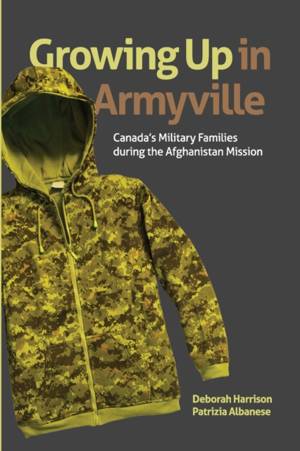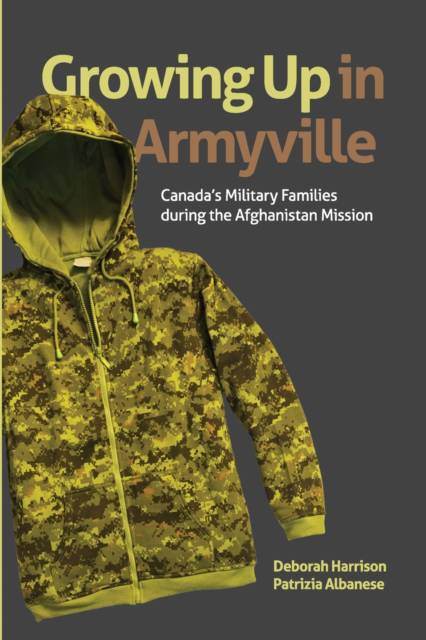
Je cadeautjes zeker op tijd in huis hebben voor de feestdagen? Kom langs in onze winkels en vind het perfecte geschenk!
- Afhalen na 1 uur in een winkel met voorraad
- Gratis thuislevering in België vanaf € 30
- Ruim aanbod met 7 miljoen producten
Je cadeautjes zeker op tijd in huis hebben voor de feestdagen? Kom langs in onze winkels en vind het perfecte geschenk!
- Afhalen na 1 uur in een winkel met voorraad
- Gratis thuislevering in België vanaf € 30
- Ruim aanbod met 7 miljoen producten
Zoeken
Growing Up in Armyville
Canada's Military Families During the Afghanistan Mission
Deborah Harrison, Patrizia Albanese
€ 70,95
+ 141 punten
Omschrijving
It was 2006, and eight hundred soldiers from the Canadian Armed Forces (CAF) base in pseudonymous "Armyville," Canada, were scheduled to deploy to Kandahar. Many students in the Armyville school district were destined to be affected by this and several subsequent deployments. These deployments, however, represented such a new and volatile situation that the school district lacked--as indeed most Canadians lacked--the understanding required for an optimum organizational response. Growing Up in Armyville provides a close-up look at the adolescents who attended Armyville High School (AHS) between 2006 and 2010. How did their mental health compare with that of their peers elsewhere in Canada? How were their lives affected by the Afghanistan mission--at home, at school, among their friends, and when their parents returned with post-traumatic stress disorder? How did the youngsters cope with the stress? What did their efforts cost them? Based on questions from the National Longitudinal Survey of Children and Youth, administered to all youth attending AHS in 2008, and on in-depth interviews with sixty-one of the youth from CAF families, this book provides some answers. It also documents the partnership that occurred between the school district and the authors' research team. Beyond its research findings, this pioneering book considers the past, present, and potential role of schools in supporting children who have been affected by military deployments. It also assesses the broader human costs to CAF families of their enforced participation in the volatile overseas missions of the twenty-first century.
Specificaties
Betrokkenen
- Auteur(s):
- Uitgeverij:
Inhoud
- Aantal bladzijden:
- 258
- Taal:
- Engels
- Reeks:
Eigenschappen
- Productcode (EAN):
- 9781771122344
- Verschijningsdatum:
- 29/10/2016
- Uitvoering:
- Paperback
- Formaat:
- Trade paperback (VS)
- Afmetingen:
- 152 mm x 229 mm
- Gewicht:
- 362 g

Alleen bij Standaard Boekhandel
+ 141 punten op je klantenkaart van Standaard Boekhandel
Beoordelingen
We publiceren alleen reviews die voldoen aan de voorwaarden voor reviews. Bekijk onze voorwaarden voor reviews.









